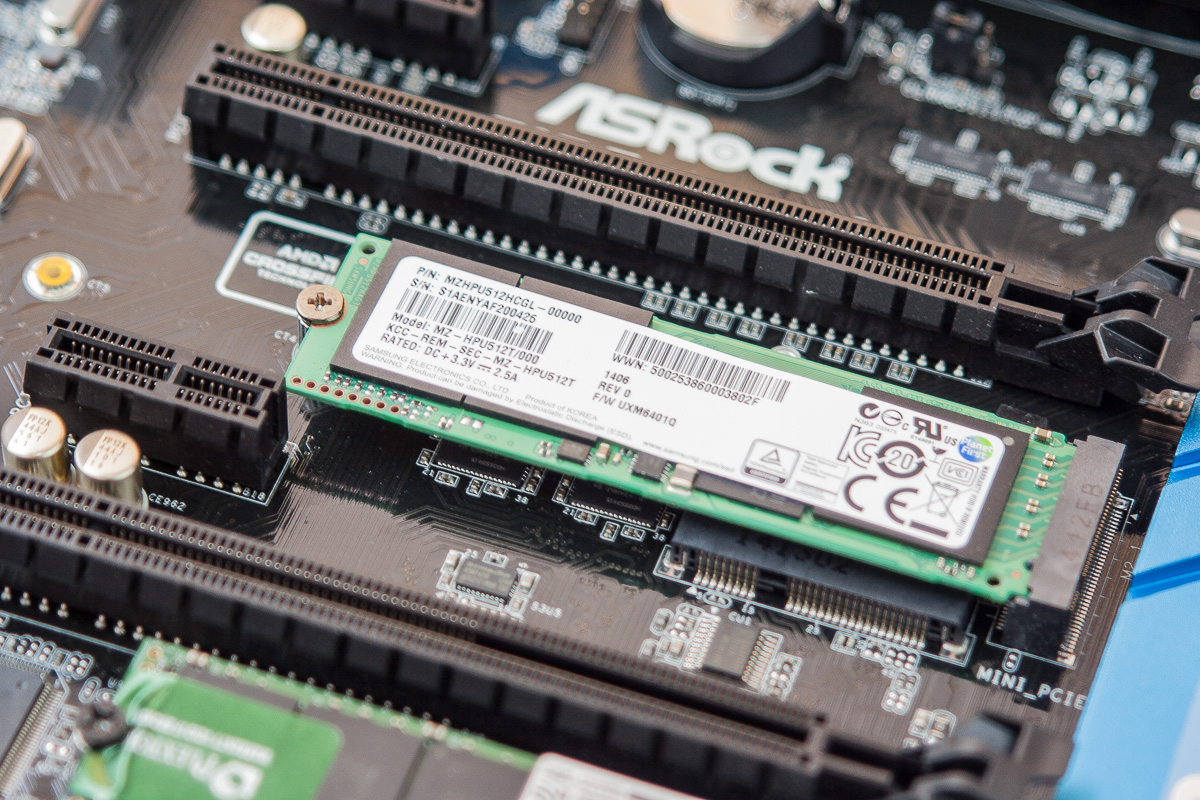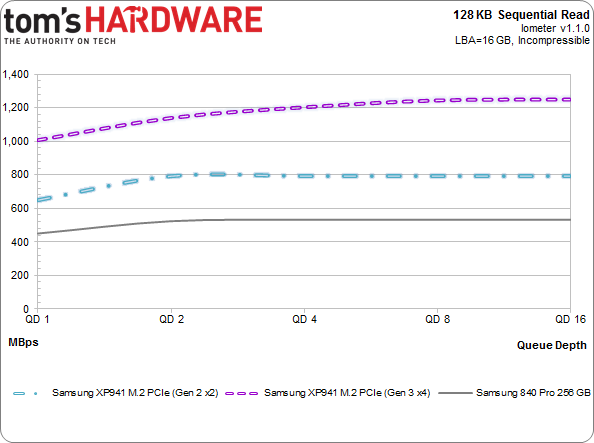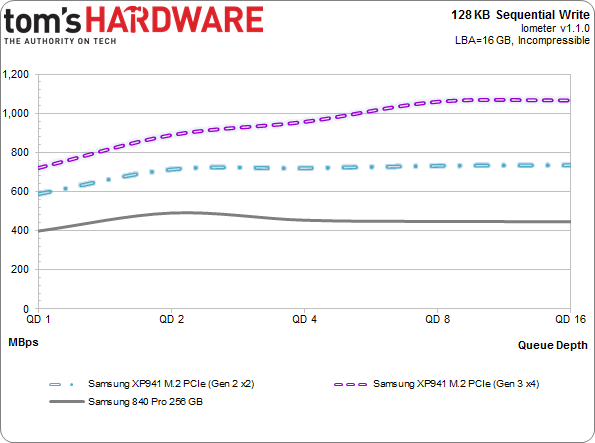A 1400 MB/s SSD: ASRock's Z97 Extreme6 And Samsung's XP941
Z97 ushers in new and exciting ways to attach and use storage devices. With support for M.2 PCIe and SATA Express, two sides of the same SSD coin, Z97 improves on Z87. But not everywhere. AsRock add to Z97 with some new tricks, and so we take a look.
Results: A PCIe SSD's Sequential Performance
Samsung's 512 GB XP941 is the first four-lane PCI Express M.2 drive in our lab, and we want to know how it performs. In order to figure out what the SSD is capable of, we'll mix up some of the tests from our other storage reviews. First, we benchmark it in ASRock's Ultra slot, which won't limit the device's peak throughput. Then we compare those results to the PCH-attached M.2 slot, which I expect will artificially cap its potential.
Sequential reads and writes are most likely to illustrate my point, so we start there.
Sequential Reads
If you read the previous page, then you won't be surprised by an outcome of 1250 MiB/s in the M.2 slot attached to our Haswell-based Core i5-4670K. A conversion to decimal lands us right around 1.4 GB/s.
Swap the drive over to a PCH-attached M.2 slot, though, and the binary read throughput drops precipitously. Eight-hundred megabytes per second is nothing to sneeze at. But that's still 33% less than the result measured from ASRock's Ultra slot.
Now check out Samsung's otherwise well-reviewed 840 Pro. It looks shabby in comparison, even though we know it to be one of the best SATA 6Gb/s options available. Then again, there's more to the performance story than just sequential throughput.
Sequential Writes
Sequential writes are even more illustrative of the puissant ASRock Z97 Extreme6/Samsung XP941 combo.
And here's why. The 840 Pro gives us almost 450 MB/s of peak bandwidth (again, in binary). Samsung's XP941 in the PCH-attached, two-lane M.2 slot offers a substantial increase, appearing just under 800 MB/s. The SSD should be commended; it can fully exploit a pair of PCI Express lanes, which SanDisk's A110 and Plextor's M6e cannot do.
Get Tom's Hardware's best news and in-depth reviews, straight to your inbox.
Then the XP941 jumps up a notch by peaking in excess of 1000 MB/s when we drop it onto ASRock's CPU-attached Ultra M.2 four-lane slot. That's basically what two of the fastest 6 Gb/s SATA drives achieve in RAID 0.
Current page: Results: A PCIe SSD's Sequential Performance
Prev Page Testing Samsung's XP941 On Z97 Express Next Page Results: A PCIe SSD's Random Performance

